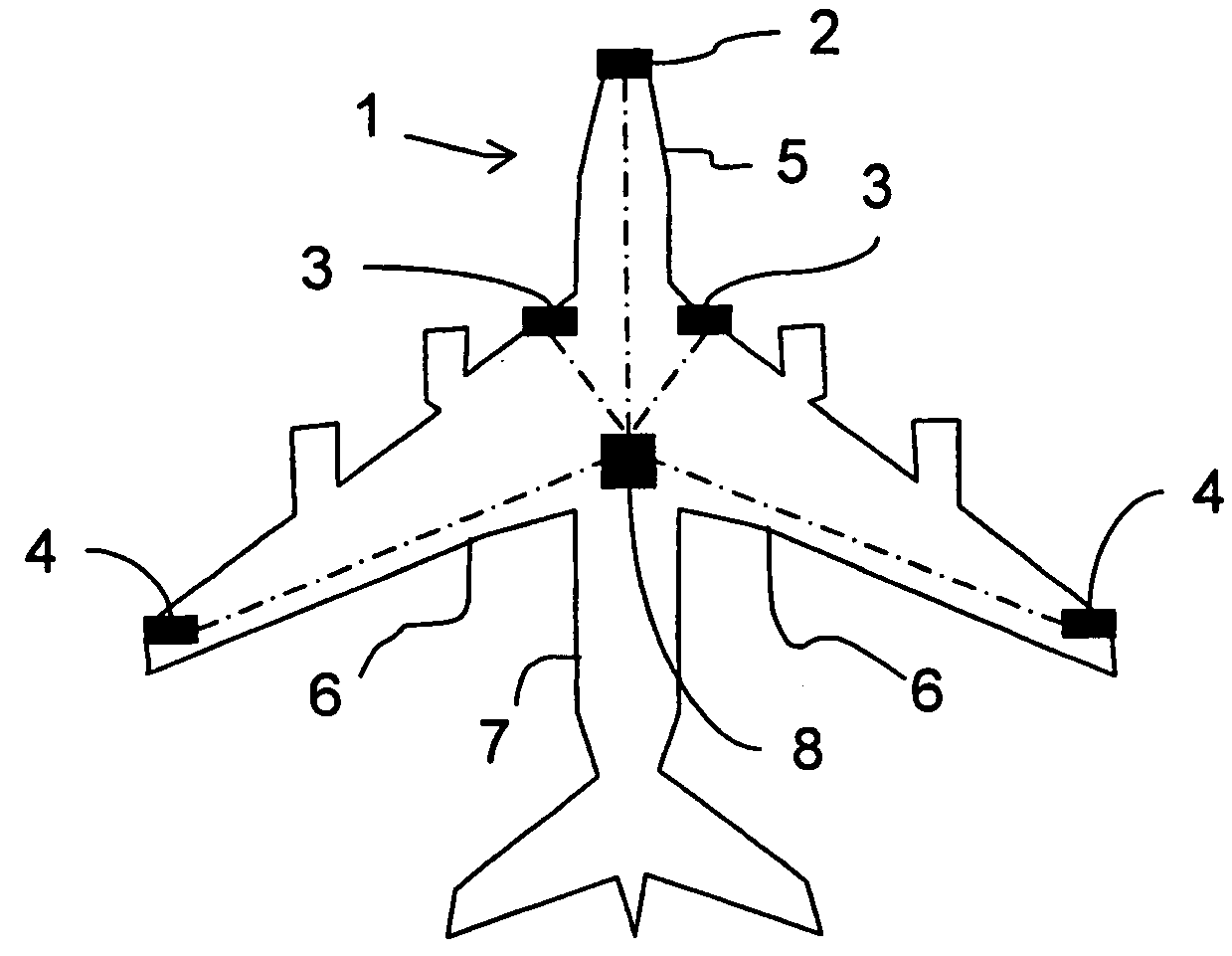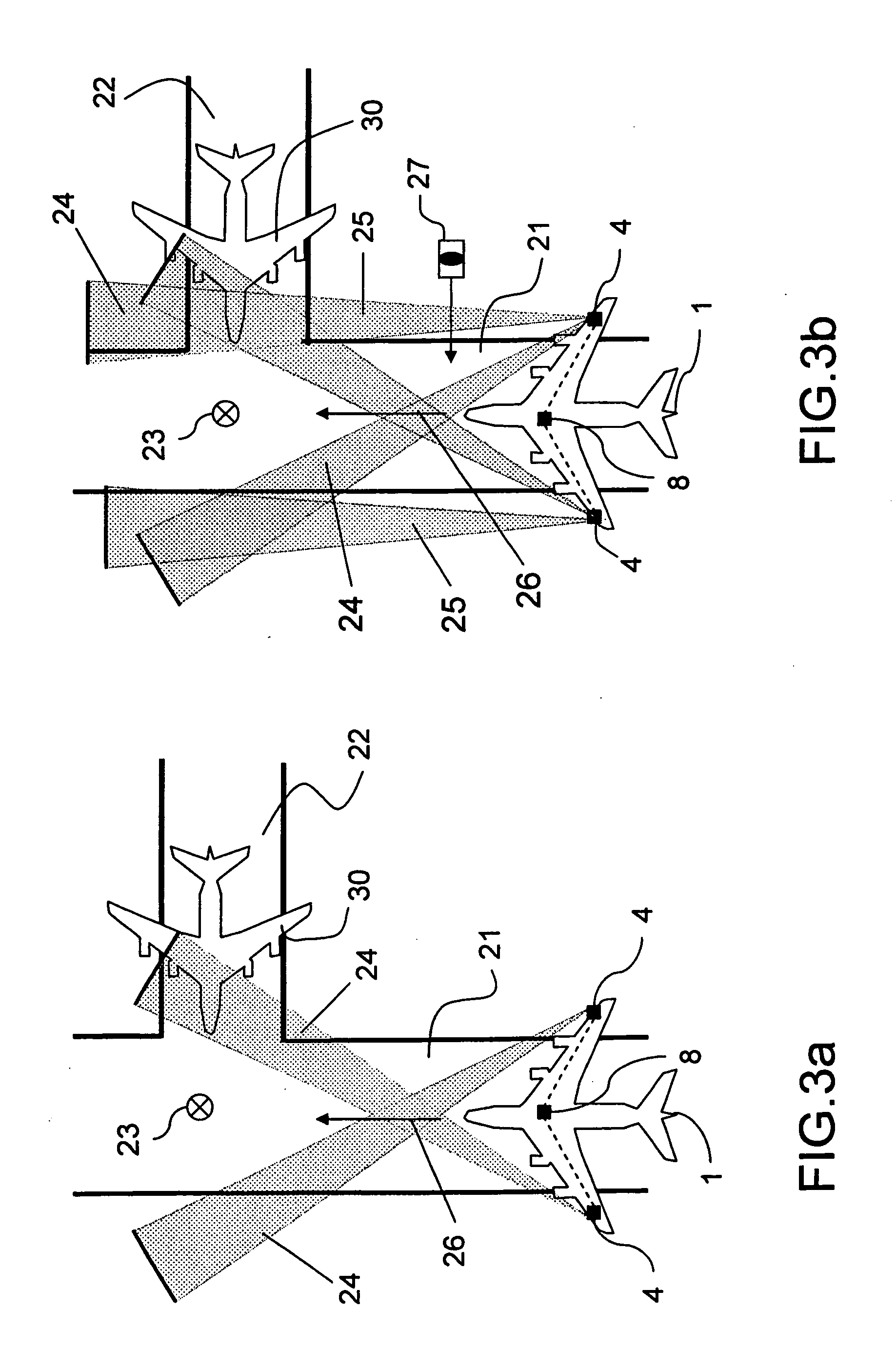Obstacle detection system notably for an anticollision system
a detection system and anticollision technology, applied in the direction of measuring devices, using reradiation, instruments, etc., can solve the problems of difficult pilots to see the wings and engines of aircraft, increasing the frequency of aircraft collisions with various obstacles on the ground, and reducing the cost of aircraft integration, so as to reduce the cost and detect obstacles on the ground very quickly
- Summary
- Abstract
- Description
- Claims
- Application Information
AI Technical Summary
Benefits of technology
Problems solved by technology
Method used
Image
Examples
Embodiment Construction
[0036]FIG. 1 represents an aircraft 1 equipped with sensors 2, 3, 4 according to the invention. The sensors 2, 3, 4 are continuous millimetric wave radars. The continuous waves allow the radars 2, 3, 4 to emit and to receive simultaneously. This makes it possible to have no blind zone during detection. The radars 2, 3, 4 emit for example at a frequency of the order of 70 GHz. The radars 2, 3, 4 form a sensor array. The radars 2, 3, 4 are additionally linked to a detection data processing system 8. Thanks to the detection data originating from the various radars 2, 3, 4, the data processing system 8 can produce a synthetic and dynamic image of the environment of the aircraft 1. This synthetic image is an overall view of the situation in the environs of sensitive parts of the aircraft 1 such as the wings 6. This view can comprise fixed obstacles and also obstacles possessing a low speed of movement. The synthetic image is thereafter presented to the pilot of the aircraft 1 so that he ...
PUM
 Login to View More
Login to View More Abstract
Description
Claims
Application Information
 Login to View More
Login to View More - R&D
- Intellectual Property
- Life Sciences
- Materials
- Tech Scout
- Unparalleled Data Quality
- Higher Quality Content
- 60% Fewer Hallucinations
Browse by: Latest US Patents, China's latest patents, Technical Efficacy Thesaurus, Application Domain, Technology Topic, Popular Technical Reports.
© 2025 PatSnap. All rights reserved.Legal|Privacy policy|Modern Slavery Act Transparency Statement|Sitemap|About US| Contact US: help@patsnap.com



